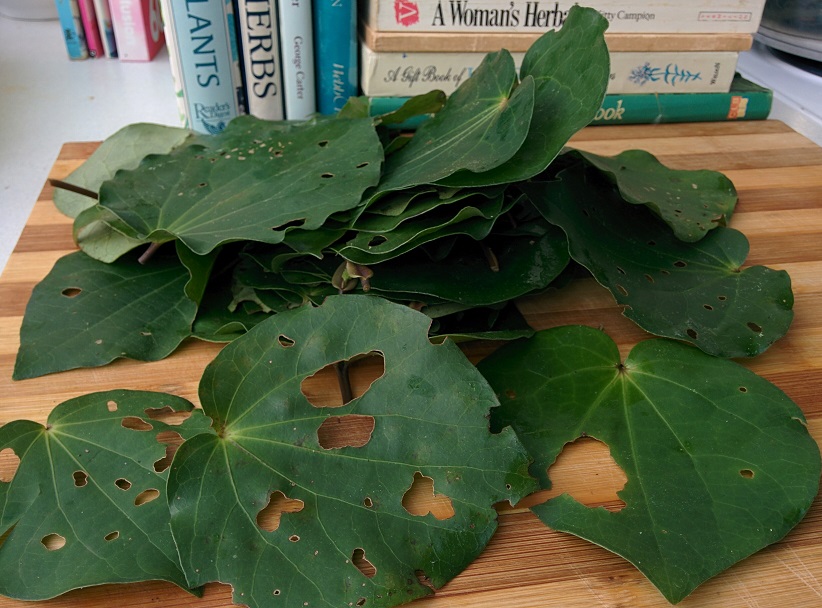
I’m a true believer in kawakawa now!
I’ve enjoyed the heart-shaped leaves and peppery fragrance of this native NZ plant (Macropiper excelsum) since I was introduced to it and its healing properties shortly after arriving in my new home country almost five years ago.
But I have only very recently made a kawakawa balm – and as luck (or unluck!?) would have it, I sprained my ankle really badly a week ago, and got a chance to try out the balm!
Every morning and evening, I massaged my sore ankle with the kawakawa balm, and it has healed incredibly well! Everyone still thought I’d be in a moon boot today, but I’m walking around almost with 100% mobility, and I am completely convinced it’s the kawakawa balm that helped the healing!
Okay… perhaps a bit of the healing also has to do with the turmeric tea (golden milk) I took as anti-inflammatory, and that I rested it well. But definitely the kawakawa mostly!
I’ve had great feedback on the balm from other people that have tried it as well, so I can say with confidence that it is truly a lovely healing balm for sprains, strains, aches and bruises.
Aren’t plants just amazing!?
Here’s how to make your own
Kawakawa Balm
Ingredients
- 1 cup kawakawa infused oil *see note
- 30g Beeswax
- Lavender essential oil (optional)
- You’ll also need sterilised jars, a fine sieve strainer, and a small pot
Method
- Heat the kawakawa infused oil in the small pot on a low to medium heat until warm (not hot). If your oil has been solar infusing for more than 2 weeks, you don’t need to leave it on the heat for very long, but if you haven’t managed to solar infuse the oil, you can leave the oil gently warming for about 20 minutes to half an hour to heat infuse some more of the kawakawa goodness.
- When the oil is warm, strain out the leaves, and add your beeswax (I have found grated beeswax melts faster) and gently stir until it is all melted together.
- If you are using essential oil, add it now, stirring all the while to keep the ingredients well combined.
- Pour into sterilized jars
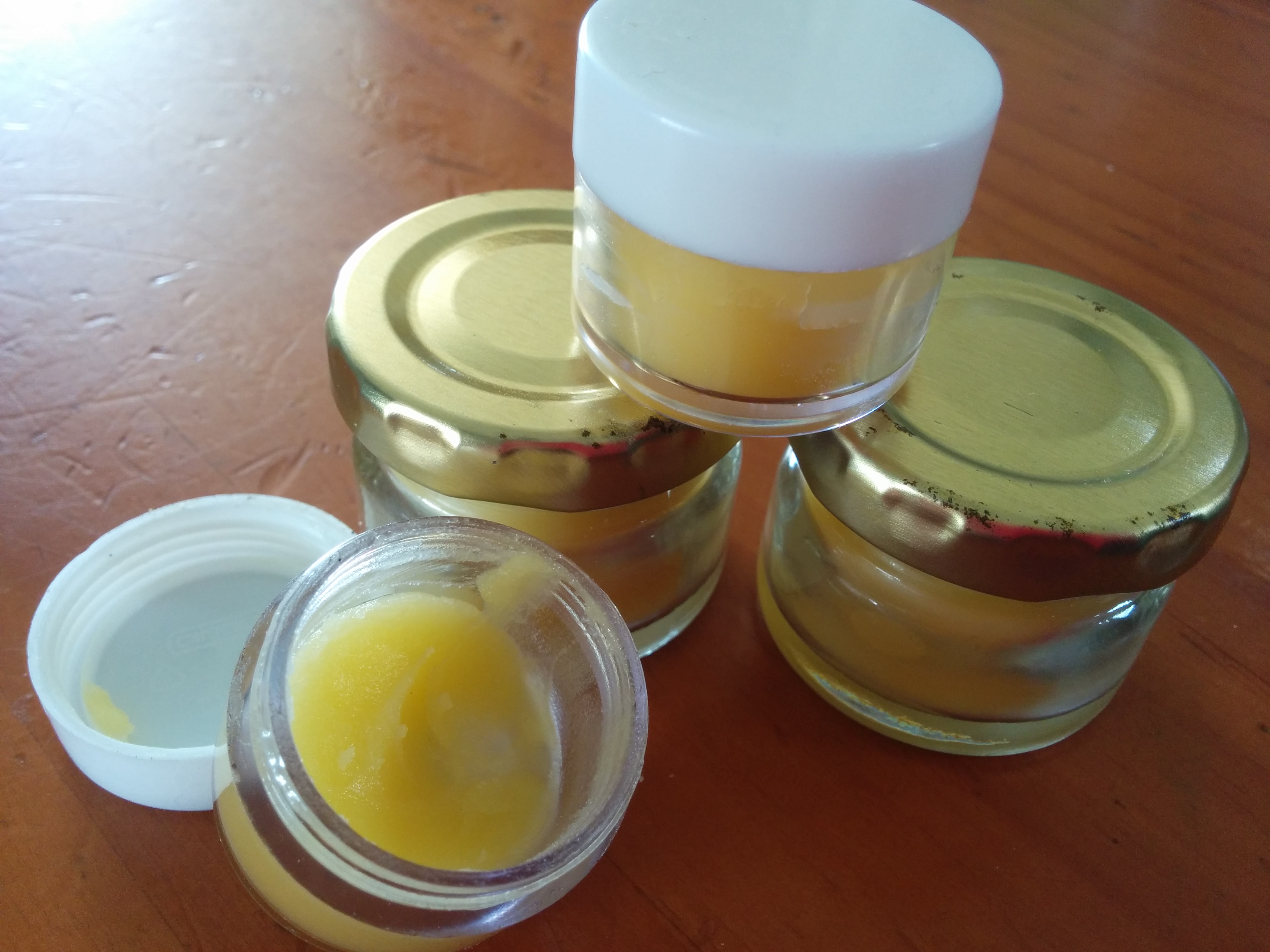
kawakawa bottles - When cooled, seal your balm, and use when necessary on bruises, sprains, strains, stiffness and even eczema.
Note
To make a solar infused kawakawa oil, pick some kawakawa leaves and place in a wide-necked jar. Pick the leaves with holes eaten through them as these are believed to be the ones with most of the good medicinal ingredients. Pour enough oil over your leaves to submerge them, shaking gently to release air bubbles, and leave in a sunny spot to infuse for up to 2 weeks.
To make a heated or warm infusion, put your kawakawa leaves and oil in a double boiler and warm through for 20 to 40 minutes.
Rongoa (Maori mediicne)
It is traditional with all rongoa practice, to say a prayer (Karakia) before harvesting – giving thanks to Io (the supreme being), Papaatuuaanuku (Mother Earth), and Tane Mahuta (Keeper of the forest), and to appreciate the plant from which you are harvesting.

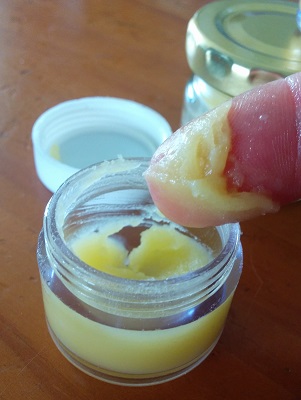
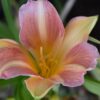
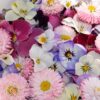
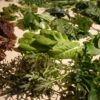
13 Comments
how much in tablespoons is 30g of beeswax
Hi Jackie, about 1.5 – 2 tablespoons, but it depends on what format your beeswax is, as many more pastilles of beeswax will fit into a tablespoon than threads…
What type of oil do you use?
HI Michaela, I often use olive oil to macerate the herbs with, or in summer, I add in some coconut oil (coconut oil is solid at room temperature, so it makes it difficult to do a ambient temperature maceration). Or, if you do the oil infusion with a double-boiler (about 8 hours instead of a few weeks in a sunny spot), you can use coconut oil too.
Hi – where can I find those small sealable jars!?
Thanks Amy, those came with me from South Africa when we immigrated 5 years ago… I had a whole box from my previous herb business in South Africa that came with me. I’m not sure where you can find them directly in NZ, but try AliExpress on the internet?
Hi Minette,
I am looking to make a kawakawa face moisuriser, I was wondering how I could do this, do I start with the balm recipe and add something else?.
If you could let me know I’d really appreciate it
Thanks
Sarah
Hi Sarah! Thanks for the comment. I think I’d like to follow up on this with someone who is much more well versed in the cosmetic preparations like facial cleansers, moisturizers etc. I’ll get back to you after I’ve spoken with her. 🙂 Thank you!
Hi. How many drops of essential oil do you use ?-ratio? any particular reason you use lavender?
Hi! I use lavender because it is a great addition to skin salves and balms as it is calming and soothing in its own right, and it smells divine! Depending on what “extra action” you want for your kawakawa balm, you can choose a different essential oil, e.g. I think it’s Marjoram that is a sore muscle soother which should go well with kawakawa. You can also omit the essential oil completely, and just go for pure extracted kawakawa goodness.
I use about 8-15 drops of lavender oil – it’s one of the few essential oils you can use lots of in one go. That’s for about 1 liter of strained oil. You can use less too if you find the scent overpowering.
Hi Minette, I have just made my first balm. I used coconut oil to infuse the Kawakawa leaves. It has set rock hard. How can I make the consistency softer and easier to use? Hopefully without having to discard what I have already made.
Jill
Hi Jill, oh dear yes, the thing about coconut oil is that it is rock hard in winter’s ambient colder temperatures! In summer your balm should be much easier to use when coconut oil gets a bit more “melty” with the general air temperatures rising. You can leave it in a warmer room as it is, and see if it gets to a more usable softness. But, I think to soften it up regardless of the ambient temperature, you can try to melt it down again, and add just a little bit of liquid oils to it, like avocado, almond, apricot kernel, or olive oil. These oils will soften the general balm consistency, and a lot of them have their own therapeutic properties too!
Hope you come right! Keep us updated. 🙂
can rapeseed oil be used?